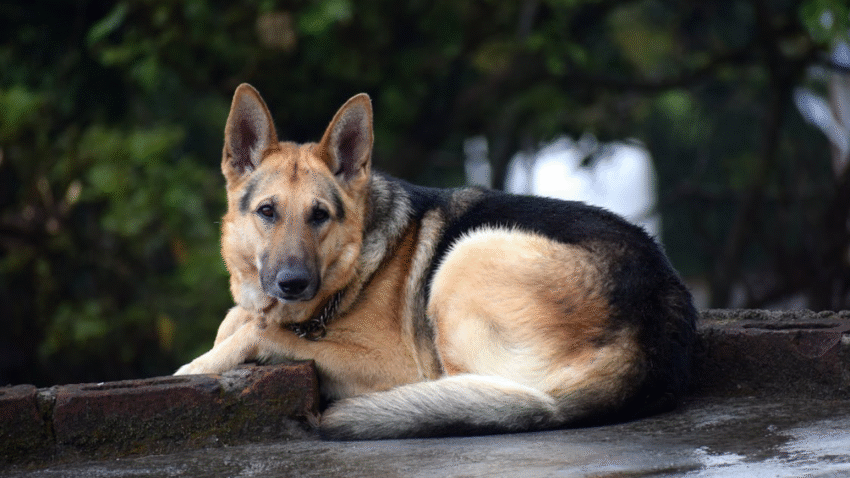Introduction
Noticed white flakes in your dog’s coat or on their bed? Just like humans, dogs can get dandruff too—and while it’s common, it’s not something to ignore. Dandruff can be a sign of dry skin, allergies, or underlying health issues. In this guide, you’ll learn how to prevent dandruff in dogs with simple grooming habits, dietary support, and environmental adjustments. Keep your dog’s coat shiny, healthy, and flake-free with these proven strategies.
Why Dandruff Prevention Matters for Dogs
Dandruff isn’t just a cosmetic issue—it can affect your dog’s comfort and indicate deeper health concerns. Preventing dandruff helps:
- Maintain healthy skin and coat
- Reduce itching, irritation, and discomfort
- Prevent infections caused by excessive scratching
- Support overall skin and immune system health
Regular care and early prevention can save your dog from skin problems down the line.
Step-by-Step Guide to Prevent Dandruff in Dogs
1. Brush Your Dog Regularly
Brushing stimulates the skin, distributes natural oils, and removes dead skin cells before they flake off.
- Short-haired breeds: Brush 1–2 times per week
- Long-haired or double-coated breeds: Brush daily
Use the right brush for your dog’s coat type—bristle brushes for short coats, slicker brushes or deshedding tools for long or thick coats.
2. Bathe Your Dog Properly
Too much or too little bathing can lead to dandruff. The key is balance and using the right products.
- Bath frequency: Every 4–6 weeks for most dogs (more often for oily breeds, less for dry-skinned dogs)
- Use a moisturizing dog shampoo with ingredients like oatmeal, aloe vera, or coconut oil
- Avoid harsh, scented, or human shampoos—they strip natural oils and dry out the skin
Always rinse thoroughly and dry your dog completely after a bath.
3. Improve Your Dog’s Diet
Skin health starts from the inside. Poor nutrition is a leading cause of flaky skin in dogs.
- Feed a high-quality, balanced diet with named animal proteins
- Look for dog food rich in Omega-3 and Omega-6 fatty acids
- Consider supplements like fish oil, flaxseed oil, or coconut oil to support skin hydration and coat shine
Note: Always introduce new supplements gradually and check with your vet before starting.
4. Keep Your Dog Hydrated
Dehydration contributes to dry, flaky skin.
- Ensure clean, fresh water is available at all times
- During hot months or after exercise, encourage more water intake
- Add bone broth to meals or offer ice cubes as a hydrating treat
Hydrated skin is healthy skin, and preventing dryness starts with water intake.
5. Monitor for Allergies
Environmental or food allergies can cause skin irritation and dandruff.
- Common triggers: pollen, dust mites, certain proteins, grains, or artificial additives
- Watch for signs like itching, licking paws, ear infections, or hot spots
- Try a limited-ingredient diet or consult your vet for allergy testing
Identifying and removing allergens is often the key to long-term relief.
6. Protect Skin During Weather Changes
Seasonal changes can impact your dog’s skin—just like yours.
- Use a humidifier during dry, winter months to maintain indoor moisture
- In cold weather, limit exposure to icy winds and salt-treated sidewalks
- In summer, provide shade and hydration to prevent heat-related dryness
Adjust your care routine with the seasons to keep your dog’s skin balanced.
7. Rule Out Underlying Conditions
If dandruff persists despite changes in grooming and diet, it may be caused by:
- Seborrhea (a chronic skin condition)
- Parasites like mites or fleas
- Fungal infections (e.g., ringworm)
- Hormonal issues such as hypothyroidism
Visit your vet for a diagnosis if you see persistent flakes, hair loss, sores, or excessive itching.
Common Mistakes to Avoid
1. Over-Bathing
Frequent washing strips natural oils and makes the skin drier. Stick to a reasonable bathing schedule based on your dog’s breed and skin type.
2. Using Human Products
Shampoos and conditioners made for people can disrupt your dog’s pH balance and worsen dandruff. Always choose dog-specific grooming products.
3. Ignoring Signs of Discomfort
Don’t dismiss itching, head shaking, or licking as “normal behavior.” These could be signs of skin irritation or allergies that need attention.
4. Feeding Low-Quality Food
Cheap dog food often lacks essential fatty acids and includes fillers that may cause skin issues. Choose premium, vet-approved brands with real meat and whole-food ingredients.
5. Skipping Regular Grooming
Even short-haired dogs need brushing to remove dead skin cells. Neglecting grooming can cause buildup that leads to flakes.
Extra Tips & Recommendations
Tip 1: Use a Natural Moisturizing Spray
Try a leave-in conditioner or skin spray with dog-safe ingredients like aloe vera, chamomile, or colloidal oatmeal. These help soothe dry skin between baths.
Tip 2: Add Coconut Oil to Meals or Topically
Coconut oil supports skin health from within and can also be applied directly to dry areas.
- Internal: ¼ tsp per 10 lbs of body weight, mixed with food
- Topical: Massage a small amount into dry spots (prevent licking until absorbed)
Tip 3: Try Omega-3 Rich Treats
Supplement skin health with tasty, natural treats made with salmon, krill oil, or flaxseed. Great for training and wellness at the same time.
Conclusion
Preventing dandruff in dogs isn’t complicated—it just takes a little consistency and attention to your dog’s grooming, nutrition, and overall health. By brushing regularly, feeding a nutrient-rich diet, and adjusting your routine based on the seasons, you can help your dog enjoy a healthy, flake-free coat. If issues persist, don’t hesitate to involve your vet and get a proper diagnosis.
📌 Bookmark this article to keep your dog’s skin and coat in top shape year-round!
